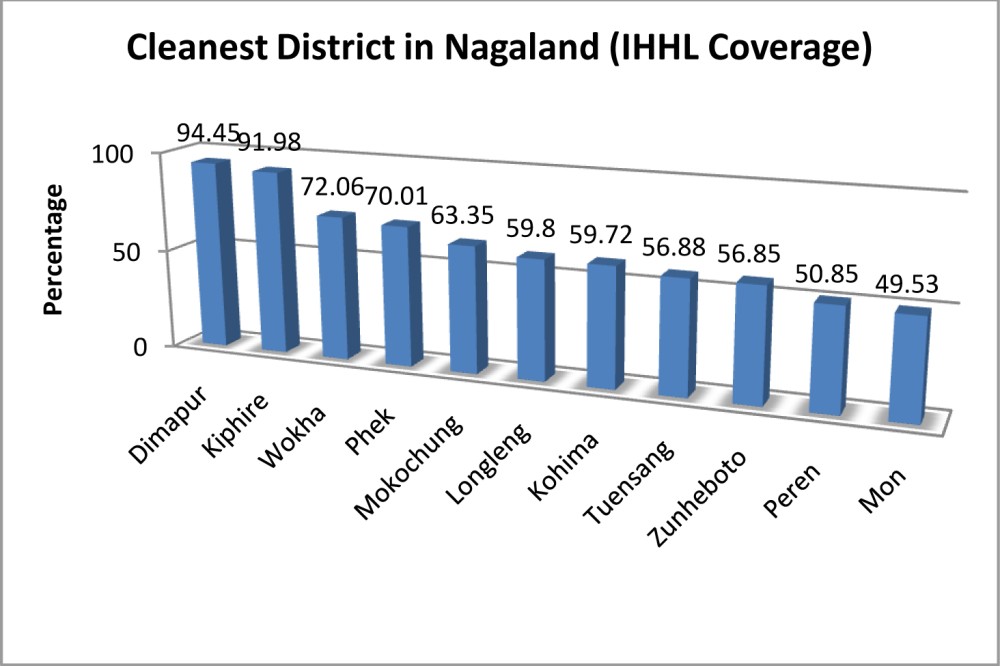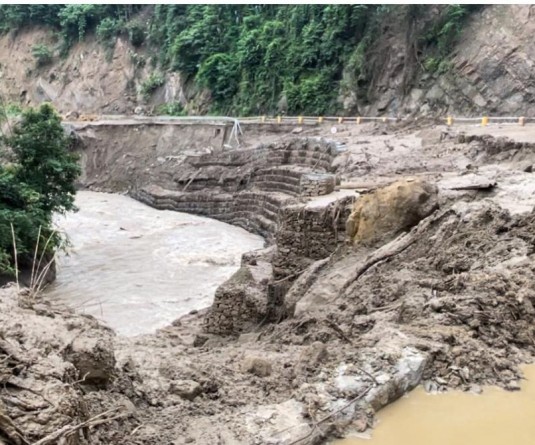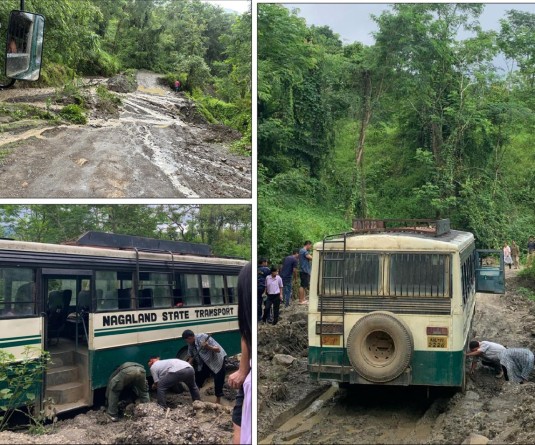
Moa Jamir
Dimapur | October 1
As India celebrates the 2nd anniversary of the “Swachh Bharat Mission” (SBM), the performance of Nagaland in the intervening period indicates that the state needs a major cleaning drive. SBM was launched by Prime Minister Narendra Modi on October 2, 2014 with the objective of universal sanitation coverage and to put focus on sanitation to achieve ‘Swachh Bharat’ by 2019.
Consequently, the Ministry of Drinking Water and Sanitation (MDWS) was chosen as the implementing agency with two Sub-Missions - the Swachh Bharat Mission Gramin (SBM-G) to focus on rural area and the Swachh Bharat Mission Urban (SBM-U) on urban area.
The Ministry had commissioned Quality Council of India (QCI) to carry out the assessment. Each district has been judged on four distinct parameters.
Nagaland ranked 16, Dimapur cleanest district
According to the state survey under Individual Household Latrines (IHHL), Nagaland position is at 16, however, its performance in district ranking is far from satisfactory. Nagaland is ranked at the lowest among the North Eastern states after Assam at 56.51%, as per the latest data provided in the mission dashboard.
Out of 649 districts in India surveyed and assessed by the Ministry, Dimapur stood at the highest in national ranking at 70th position, with 94.45% IHHL coverage.
The data indicated that Dimapur is the cleanest district in Nagaland, followed by Kiphire at 95 in national ranking. Mon was ranked the lowest among the 11 districts of Nagaland at 415, with 49.53 IHHL coverage. Mizoram, Sikkim, and Meghalaya were best performers with each having 4, 2 and 1 district respectively having 100% coverage.
However, none of the districts from the Nagaland feature among the 75 districts with households having access to safe toilets and using them (toilet usage, water accessibility, safe disposal of waste); Households having no litter around; Public places with no litter in the surrounding and Households having no stagnant wastewater around.
On the contrary, the National Sample Survey Office (NSSO) carried out in 2015 had listed Nagaland among the top 10 performing states in India standing at 5th position. The ranking were given on the basis of percentage of households having sanitary toilets and using them (either household or community toilets).
Open Defecation Free (ODF) Mission
While in September last year, the Chief Engineer of Public Health Engineering Department, Government of Nagaland had declared that all the villages in Nagaland would become Open Defecation Free (ODF) by March 2018. He also claimed that 246 villages out of 1128 villages have already achieved the target.
However, according to the latest SBM-G data accessed on October 1, 2016, only 11.10% of the villages in Nagaland were ODF, which is an indication that Nagaland still has a long way to achieve the 2018 target.
When SBM was launched 2014, Nagaland had 57.06 % IHHL coverage, the progress is sluggish as the figure, as of now, still stands at 66.75 %, according to the data. There is only negligible addition since last year as the figure for 2015-16 and 2016-17 stands at 66.03% and 66.75% respectively.
Urban Sector: Looking at the urban sector, the SBM-U, out of the targeted 24,350 IHHL to be built in Urban Local Bodies (ULBs), the state has so far built only 3675. ODF community toilets performed better at 70 out of targeted 73, but the concern for general public sanitation is sorely missing as out of 40 targeted, none were built.
Only 19 wards out of 234 wards in Nagaland have 100% door-to-door waste collection. Waste management remains a problem, as the state has zero waste to energy conversion and waste to compost conversion. With the SBM stepping into its third year, Nagaland seriously needs to relook its strategy and commitment if it intends to achieve its target.





